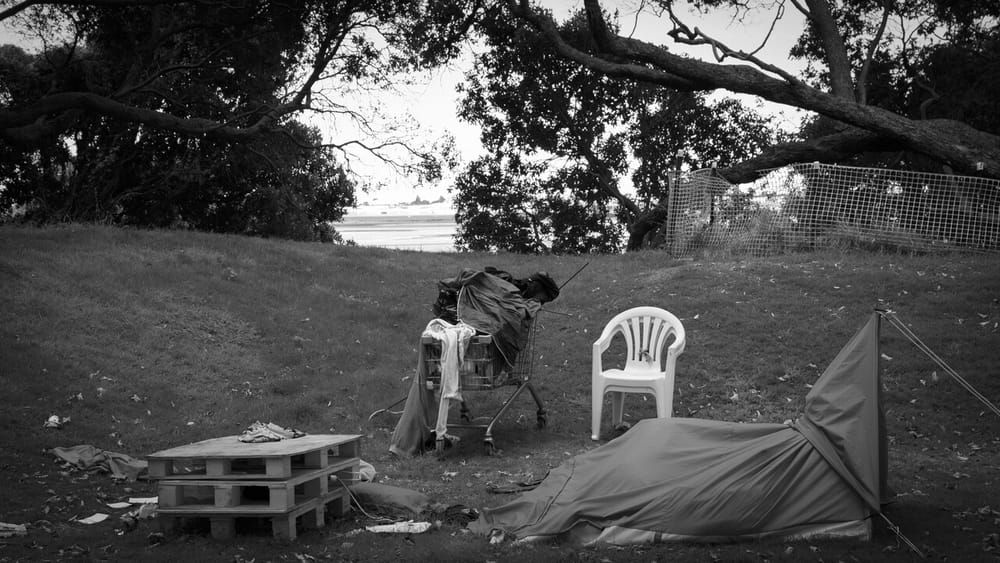
With each passing year, international studies and polls unanimously show that more people are becoming stressed, overwhelmed, depressed and anxious. Prior to 2020, the pressure of living with the constant demands of smart phones, instant messaging, social media and the 24/7 news cycle were increasing exponentially. The sudden, global pandemic added a traumatic toll that has left many people isolated, feeling out of control, reconsidering relationships, facing financial strife or housing instability, or experiencing an existential panic. All this has led to of a full-blown mental health crisis on a massive scale.
The good news is that there is a wealth of readily available resources for taking care of your physical, mental, emotional and spiritual wellbeing. The positive side to modern technological advancements is that it's easier than ever to connect with experts, peers and video training in order to help integrate mental health and self-care practices into your home routine. Anything you want guidance with—as the Apple commercial says, there's an app for that.
Four foundational practices
Most people are familiar with expert recommendations on how to manage stress, anxiety and long-term mental health. Some of the notable recommendations include regular exercise; quality sleep; good nutrition and hydration; limiting stimulants such as caffeine, nicotine, alcohol and recreational drugs; maintaining a work/life balance; managing news, TV, video game and social media consumption, (especially first thing in the morning and in the two hours before bed); talking to a therapist or mental health specialist; going into nature; spending time with pets; connecting with loved ones; and implementing relaxing practices such as yoga, meditation or a calming hobby. With consistent use, these practices create a strong inner foundation on which to build a healthier, more peaceful and fulfilling life.
These are effective long-term foundational practices. But what can you do in the immediate moment when stress, anxiety, sadness and overwhelm arise? In my practice as a meditation teacher specialising in stress and anxiety management, self-care, emotional intelligence and understanding the mind-body-heart-nervous system connection, the following four practical tools have become consistently important to clients who are navigating stress.
Stop—halt—and ask
H.A.L.T stands for Hungry, Angry, Lonely and Tired. This is a tool to assess your situation and go forward.
H.A.L.T. (Hungry, Angry, Lonely, or Tired) is a tool that takes the expert-recommended elements into consideration, while also providing immediate practical application. Originating from recovery treatment but applicable to anyone, H.A.L.T. is a self-assessment process that identifies basic needs in real time.
When you start feeling unsettled inside—physically, mentally, emotionally or energetically—simply take a moment to stop (halt) and ask:
“Am I Hungry? Angry? Lonely? Or Tired?”
Each of these internal states has an immediate remedy. The human body is a highly attuned, highly sensitive and interconnected organism with relatively simple basic needs. By tuning in, identifying and fulfilling your own needs, you can achieve self-regulation.
That sudden annoyance at your partner could be down to the fact that you drank too much coffee, didn’t drink enough water and really need to eat something. That angry outburst at your kids could be telling you that you need to have some personal time for yourself. That frustration with a project at work could be an indication that you are exhausted and need a good night’s sleep. Using H.A.L.T. each day allows you to understand your body mechanics and seek the source of distressing feelings and impulses, while giving you direct action steps to resolve them.
Restorative breathing
Breathing soothes the nervous system
One of the most convenient and impactful tools in the self-regulation toolkit is breath. Breath can circumvent the mind to work directly with your body’s intelligence, self-soothing the nervous system without requiring your conscious thought. There are many restorative breath techniques that calm and balance the central nervous system. They slow your heart rate and shift you out of your sympathetic 'fight or flight' stress response and into your parasympathetic rest, digest and repair peace response. Here are some of the simplest and most powerful restorative breathing techniques.
1. Belly breath
Drop your breath down into your lower belly. Feel your belly slowly float up on the inhale and float back down on the exhale like a gently rolling wave.
Watch how to breathe with your belly here.
2. Long exhale breath
Inhale through the nose and release a long exhale out through the mouth, doubling the length of the exhale compared with the inhale.
The long exhale breath is especially helpful in managing panic attacks—when your chest typically becomes constricted and it can feel difficult to take in enough air. Counter-intuitively, focusing on getting all the air out creates a vaccuum in the lunges for your body to naturally take its next inhale. It also slows down your breathing pattern and correlating number of breaths, getting you closer to restorative rate of six breaths per minute.
Watch how to practice extended breathing here.
3. Cyclic sighing
Inhale through your nose, pause for a second, then inhale again before releasing all the air out of your lungs with a long, steady exhale. A slight variation on the long exhale breath, this technique slows the heart rate, stimulates the vagus nerve and calms the entire nervous system while circulating oxygen through the bloodstream.
The most recent study at Stanford Medicine found that cyclic sighing is highly effective in reducing overall stress and anxiety when practised for just five minutes each day. The benefits increase significantly with consistent use.
Whichever restorative breath feels best for you, know that your body will never forget how to breathe and will always rebalance itself on its own. However, practising these calming breath techniques regularly can assist your physiology. By learning to breathe better—your system can self-regulate and instinctively shift into a more relaxed state at any moment.
Watch how to practice cyclic sighing here.
Somatic sensing
Somatic sensing is a way to interrupt over-thinking
Somatic sensing (soma is a Greek word that means body) combines physical, and sensory awareness with mindfulness to act as an instant pattern interruption for over-thinking. It gets you out of your head by focusing instead on the physical body and senses, grounding you in the present moment. Anxiety, stress and worry can arise from leaving the present and travelling somewhere else in time—to a place where you have no ability to create resolution. When your mind fixates on a painful or incomplete memory from the past, you cannot go back to the past to fix or change what happened. Likewise, when your mind starts spinning panic-inducing stories about possible future outcomes for events that have not, you cannot travel into the future to ensure those events does not occur. When your mind wanders into the past and future, you are ourselves powerless: because you cannot take action in those imaginary spaces.
The key word here is imaginary. The past happened, but it no longer exists. The future has not happened yet. The only place that is real and you can ever act from is just in this one moment, this one place in time, this one place in space where the physical body is. That is the value of present-moment awareness. The following somatic sensing and presence practices help to quiet and focus an anxious mind.
1. 5-4-3-2-1 grounding technique
When you feel yourself becoming stressed or anxious, shift your focus. Scan your environment. Name five things you can see, four things you can feel, three things you can hear, two things you can smell, and one thing you can taste.
Focus on using your senses to experience each one.
Watch the grounding technique here.
2. Mindfulness practice
With eyes opened or closed, slow down your breath and start to practise present-moment awareness, experiencing your life as it unfolds around you in real time. The focus on dropping away from thinking about life and simply being in it instead.
Become aware of your body, feeling every point of contact between your body and another surface. What does it feel like to be in your body at this moment? Focus on your breath. Feel each breath fully as it comes in, expands, disappears back out and contracts. What does it feel like to breathe?
Focus on the sounds around you—any sound you become aware of, near or far. What does it sound like to be alive right now?
Focus on your skin and all the places where your skin meets the air. Feel the temperature of the air on your skin. How does the air feel on your skin?
Bringing your full focus and attention into the one moment dissipates anxiety and existential panic by anchoring you in the present. The present is the only place where your will, choice and agency are available, should you decide to use them. It is also the only place where you can truly connect to and receive all the good things in life.
This connection instills uplifting feelings of love, joy, appreciation and gratitude.
Watch how it's done here.
Self-listening
Listen to yourself and identify your needs
Another common cause of stress, anxiety and overwhelm is feeling disconnected from yourself, often due to ignoring messages from within. By avoiding, pushing down, numbing out or distracting from your inner voice, internal stress can build up and compound over time. Like a child who has a meltdown when they are being ignored by their parent, a breakdown can eventuate when the small voice inside gets ignored. That inner voice will get louder, eventually demanding attention by forcing you to stop and listen. But there is another way. By adopting a new habit of regularly tuning in and listening to yourself, you can start to identify and fill your own needs quickly and easily—no meltdown required.
Here is a quick self-listening technique:
Whenever something starts feeling off inside, turn your focus inward. Visualise dropping your mind into the centre of your chest and say to yourself,
"I’m here, I’m listening. What do you need me to know right now?"
Listen to what your inner voice has to say.
Then ask yourself, "What do you need from me to feel safe, loved and cared for right now?”
Listen again.
Then take aligned supportive action to provide your own sense of safety and well being.
Build your inner toolbox
Keep the self-regulation tools of H.A.L.T., restorative breathing, somatic sensing and self-listening in your inner toolbox to utilise whenever you need them. Along with the foundational lifestyle practices, these techniques can quickly improve your inner experience. If you need more support to manage anxiety and stress, seek out a doctor, therapist, EMDR (Eye Movement Desensitisation and Reprocessing) specialist or trauma-informed coach, who will be able to provide specialised and personalised help.
The key to creating new patterns is consistently changing behaviour over time. So go easy, go gentle and try these new tools day by day. Small changes build upon each other. With regular use of these self-soothing techniques, your inner fortitude grows stronger and more secure. You navigate the tides of emotion faster and more easily, while recovering more quickly. No matter what is happening in the external world, you are your own source of calm, peace and wellbeing.







